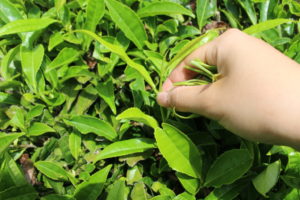
Hatsumomiji (はつもみじ) refers to the first maple leaves to turn red in autumn.
This was the first hybrid between a Japanese native tea plant and a black tea cultivar from Assam, hence the name.
It is used for making black and oolong tea.
History of Hatsumomiji
In 1932 at the Kagoshima prefecture agricultural test site, a cultivar from Assam named Ai2 was crossed with a native tea plant from Kagoshima, Nka05.
After four years, the best seedling was selected. In 1937, it passed a test for black tea specifically.
Many years later, in 1953, Hatsumomiji became a registered cultivar for black tea production.
Since then, hybrids with the same purpose have been developed (such as Benifuuki) and so Hatsumomiji has become very rare.
Characteristics of Hatsumomiji
Hatsumomiji exhibits a good resistance to disease and also to wind damage.
However, it isn’t suitable for cold weather.
It is a normal budding cultivar with fairly big and long leaves of a light green color.
Its catechin content is very high. It also offers a high yield at harvest.
When prepared, the black tea from Hatsumomiji has a good quality. It has a refined aroma and a strong taste.




